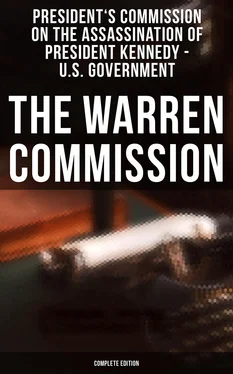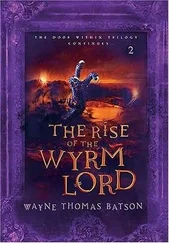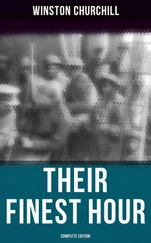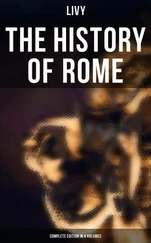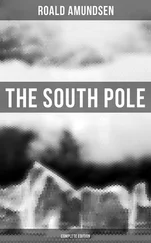I said, "I do not want to hear. As far as I am concerned, you could be a Communist. But to me a Communist is a human being. That is just his way of life."
We are Americans. We have Japanese people. That is their way of life. A Communist, as long as he is not hurting our Government, that is his right to be a Communist. That is his way of life.
I did not want to know anything about Mr. Lane, because I knew Mr. Lane wrote sensible things, that Mr. Lane was interested. And what he wrote made sense. And that is all I am interested in, sir.
If Mr. Lane is getting money, and I am appearing, that is just fine. I am not interested. If I can get before the public and through Mr. Lane doing it, I want to get before that public and state my American way of life and try to prove my son is innocent.
The main part of this is to try to prove Lee Harvey Oswald innocent.
The Chairman. Very well.
Mr. Rankin. You said during your testimony that an agent showed you a picture at the Six Flags Inn. Do you remember that?
Mrs. Oswald. Yes, and I am glad you brought that up, because I have notes on this, too. I have something important to say about that.
Mr. Rankin. I will ask the reporter to mark this.
(The document referred to was marked Commission Exhibit No. 237 for identification.)
Mrs. Oswald. Before I see a picture, see—if it was in a square, cupped in a hand, I believe it would be better for me for identification. That is the way I saw it. It was cupped in his hand.
Mr. Rankin. Mrs. Oswald, all I have is Exhibit 237, in the shape it is in. And I will hand it to you and ask you if you recall that as being the picture that was shown to you.
Mrs. Oswald. No, sir. This is not the picture shown me. The picture that was shown me was a full face and just shoulders. This is not the picture.
This picture was about this size, very glossy black and white, with a big face and shoulders. I have background here, a lot of white. But this took the whole picture—the face and shoulders. And this door was just ajar. And this man had this picture—and the two corners were cut.
Mr. Rankin. About what size is the picture you are looking at?
Mrs. Oswald. That is about three by four—approximately three by four, cupped in this man's hand, and the two corners were cut. The two top corners. And a very glossy picture, black and white, with a big face and shoulders. This is the picture shown me, sir.
Now, at Six Flags Inn, about 3 days later, when I entered the room, on the table were a lot of newspapers. I walked into the room in the presence of my son, and all of the agents. As I stated before, Marina and I knew nothing of what went on. We did not know how Lee was shot or anything, because we did not sit down and watch television.
Mr. Rankin. What son are you talking about?
Mrs. Oswald. Robert. So this is approximately the Wednesday, the 25th—no—Sunday was the 24th. About the 26th—it was a few days after Lee was shot, a couple of days. So I walked into the room, and I picked this paper up and turned it over, and I exclaimed, "This is the picture of the man that the FBI agent showed me."
And one of the agents said, "Mrs. Oswald, that is the man that shot your son."
Believe me, gentlemen, I didn't even ask his name. And nothing more was said.
Now, that is very unusual.
Mr. Rankin. Now, the picture that you are talking about that you picked up, was a picture in the newspaper?
Mrs. Oswald. In the newspaper. The bottom part of the newspaper. I can see that like I can see the picture. I had never seen the picture before.
Mr. Rankin. Did you later learn whose picture that was?
Mrs. Oswald. Yes, when I returned to my home in Fort Worth, Tex., about a week later, Mr. Blair Justice, of the Star Telegram, brought me all the papers, that was the next time I saw the pictures and knew it was Mr. Ruby. And it was a bottom page, and it was this picture shown me.
Now, this is what I want to know.
Mr. Rankin. Tell us who was there when you said that, about the picture in the paper?
Mrs. Oswald. Mr. Mike Howard, Mr. Garry Seals—well, all of the agents there. The room was full. And Robert Oswald was there. The room was full.
Mr. Rankin. Was Marina there?
Mrs. Oswald. Marina was in the bedroom. Marina and I stayed in the bedroom with the children. We could get snatches of the television and so on. The children had diarrhea and so on. We were busy.
As I picked the paper up and turned it over, it was on the back. This picture I saw, the same picture.
Mr. Rankin. Do you know whether your son Lee Oswald knew Jack Ruby?
Mrs. Oswald. No, sir, I have no way of knowing that. I just hope that he did, if I am right. If Lee is an agent, I hope he knew Jack Ruby.
Representative Ford. When you made that statement, after looking at the newspaper, did you say it loudly enough for people in the room to hear it?
Mrs. Oswald. Yes, sir, because they answered me. They said, "That is the picture of the man that shot your son."
But nothing has been said since that. That is the part that I question all about this.
And then I am not asked to be subpenaed at Jack Ruby's trial or anything.
The FBI says yes, they showed me a picture, but that wasn't a picture of Jack Ruby, not even giving me a chance.
I don't understand. Something is not according to Hoyle. I keep telling you gentlemen.
Now, I can identify this picture, I believe, out of a hundred pictures.
It was a black and white glossy picture of a big face and shoulders. And why I express it—he had it cupped in his hand, and he poked his arm and his hand with my bifocals, and all I could see was the picture and the hand. I didn't even see Mr. Odum so much. That was that hand poked in front of me. I am positive of this. Yet I am not asked any more about the picture. They state, yes, they showed me a picture, but not this picture. I am positive, gentlemen.
Mr. Rankin. I will ask you about a list of names and see if you know any of them, or if your son, Lee Oswald, knew any of them, to your knowledge.
Mrs. Oswald. I will be happy to answer.
Mr. Rankin. Karen Bennett, do you know that?
Mrs. Oswald. Yes. I have inquired about this Karen Bennett.
Mr. Rankin. Did you know her?
Mrs. Oswald. I do not know whether I knew her or not. I have asked several people to investigate this for me.
Upon returning from the country on an OB case. I went to work for Royal Clothiers, in Fort Worth, Tex., as an outside sales lady. In OB you have to wait for the babies—and I needed to live. There was a young lady there by the name of Carol, I called her. It could be Karen. Looked very much like the young lady I saw on the television. That is the first time I connected the two. Her father was one of the biggest gangsters in Fort Worth, Tex. And he himself was killed by the gangland of Fort Worth, Tex.
Why I know that—the manager of this Royal Clothiers had remarked who Karen's father was, and I said to him, "I don't appreciate your broadcasting that. I think what her father did has nothing to do with the girl. She is working. Give her a chance to her own life."
I am always standing up and getting myself in trouble. I want you to know that. Maybe I am not liked. But if that makes not being liked, I will continue not being liked, sir.
So this is when I first started to work. However, I found out that the young lady also had another job at night, which is all right. She was working as a barmaid in a tavern on Hemphill Street, in Fort Worth, Tex., and she had two small children, and so if she worked at the Royal Clothiers during the day, it was necessary that she work at this saloon, or whatever you want to call it at night.
Mr. Rankin. Was she married?
Mrs. Oswald. No, she was not married. That maybe is what she had to do to support her children. And I understand, because I was left alone.
Читать дальше
